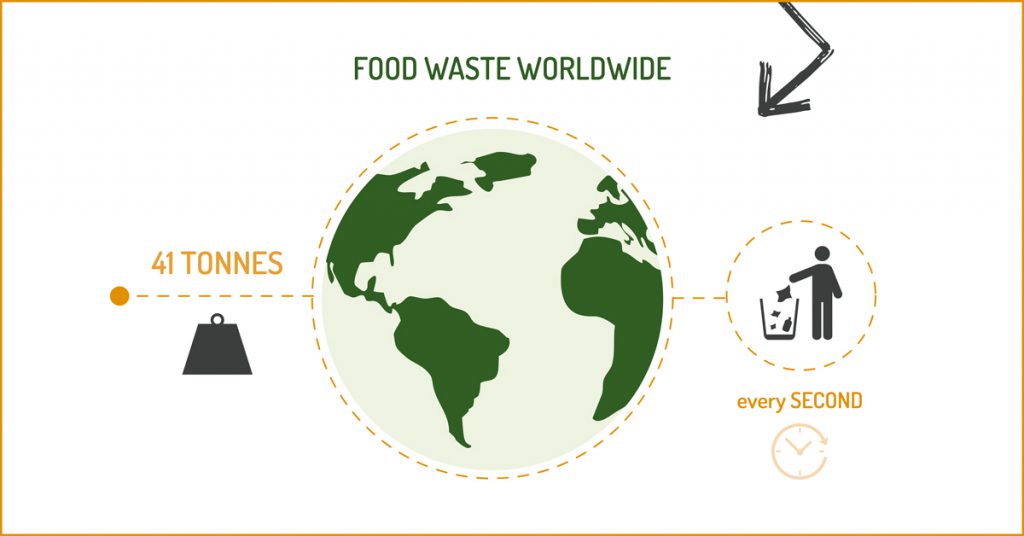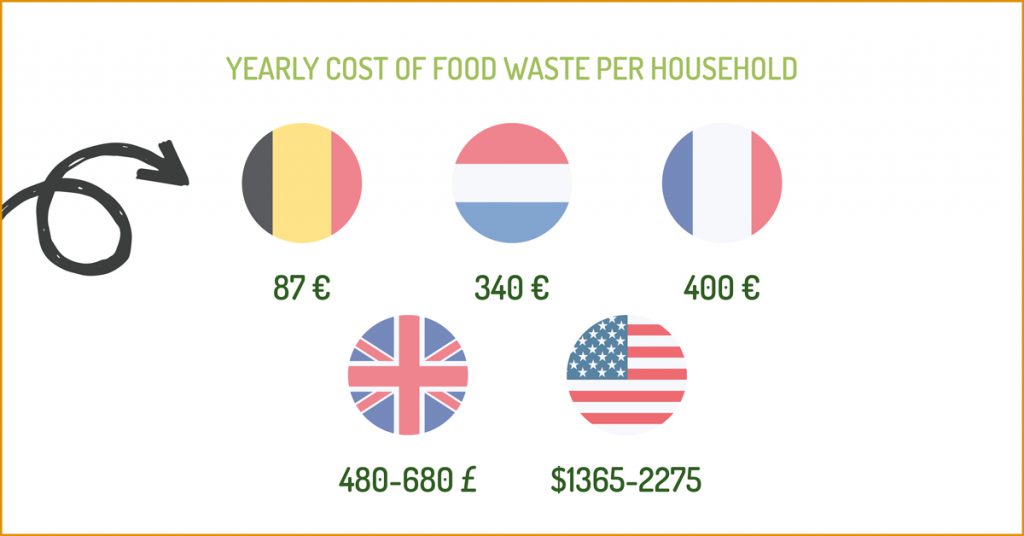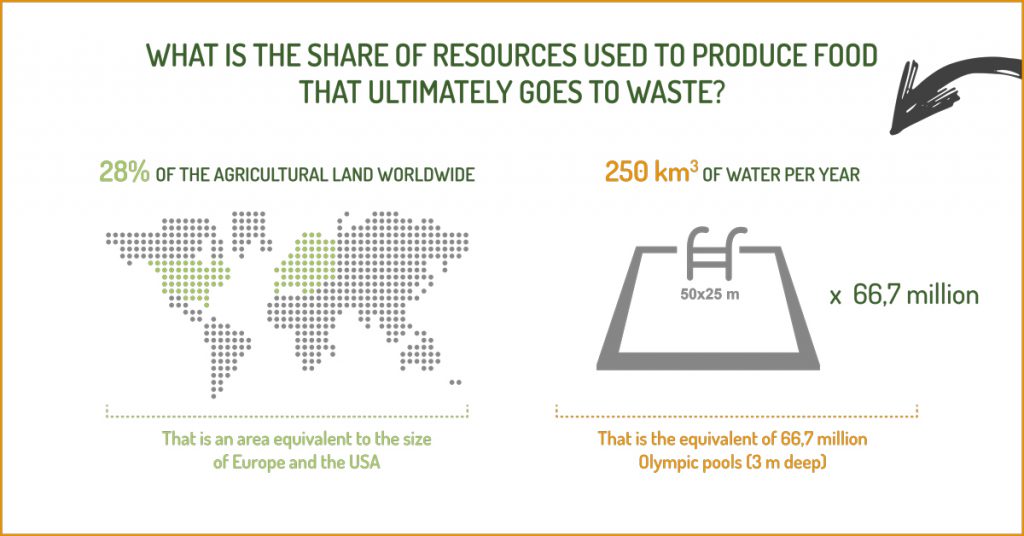Saving money and the environment and feeding the world’s growing population… There are plenty of reasons to get people to reduce food waste. Let’s take a closer look at this alarming, albeit avoidable phenomenon!
There are plenty of initiatives to combat food waste cropping up around us, an encouraging sign that some of the stakeholders in the food chain are aware of this colossal problem. According to the FAO, approximately 1.3 billion tonnes of food are wasted or lost every year, or a third of the food that is produced for human consumption1.

Feeding the world in 2050 by reducing food waste
Nowadays, consumers can make a choice from an extremely diversified and abundant range of foods. Demographic growth will only aggravate the situation, however, because the global food production must increase by 60% compared with 20062 to feed the 10 billion people living on our planet by 2050. And this production increase may be compromised by the climate change that the agricultural sectors of the world are experiencing.
A better use of the available food could thus have a crucial impact. According to estimates, we would need to increase global food production to feed the world in 2050 by “just” 25%2,3, if we cut food waste by half. Reducing food waste would thus also reduce the pressure on natural resources and contribute to ensuring global food security.
The difference between food waste and food losses
Food losses and food waste occur throughout the food chain.
Foodstuffs that are lost in the supply chain, which encompasses every stage from its production to its distribution, are considered food losses. These food losses are caused by problems that occur prior to the harvest (climate conditions, parasites…) or during the harvest, the processing, the warehousing, the conditioning or the transport of this food. Often, this is caused by a lack of tools, infrastructure, technology, skills and/or knowledge.
Food waste occurs at the commercialisation and consumption stage. The term refers to food for human consumption, that is:
- discarded (excessive amounts purchased, bad storage, best-before dates that are imminent or exceeded…) or
- used for non-food purposes (food that does not meet the cosmetic criteria dictated by the market…)4.
The paradox of developed countries and developing countries
Contrary to what one might think, the food losses and waste are comparable in developed and developing countries. They amount to 670 and 630 million tonnes each year respectively. The causes are, however, very different for these two parts of the world5.
Although the developed countries waste food at each level of the food chain, the waste is most consistent at household level. In Europe, for example, consumers are responsible for 53% of all food waste6. In the United States, households discard approximately 150,000 tonnes of food every day, which corresponds to 1/3 of the daily calorie intake of Americans7.
In the developing countries, the food losses and food waste mainly occur at the early stages of the food chain, i.e., in production and processing. The contribution of consumers to food waste is very low in these countries. Every inhabitant wastes 6 to 11 kilos of food a year, i.e., 10 times less than consumers in the developed countries2.
Plant foods are most affected by waste
According to the FAO8, the following food products have the highest wastage and loss rates:
- 45% of fruit and vegetables, or 3.7 trillion apples.
- 45% of roots and tubers, or one billion bags of potatoes.
- 35% of fish and seafood, or the equivalent of 3 billion Atlantic salmon.
- 30% of cereals, or 763 billion boxes of pasta.
- 20% of legumes and oleaginous fruit, or the equivalent of the amount of olives you need to produce enough olive oil to fill 11,000 Olympic-size swimming pools.
- 20% of meat, or 75 million cows.
- 20% of dairy products and eggs, or the equivalent of 574 billion eggs.
What is the cost of food waste?
The direct economic cost of food losses and food waste (without counting fish and seafood), solely based on production costs, amounts to 750 billion USD, i.e., approximately the GDP of Turkey or Switzerland. As the production cost per kg of meat is very high, meat alone accounts for 20% of food losses and food waste, even though it only makes up 4% of food losses and food waste2.
Environmental impact
The production and the disposal of food that will never be consumed have a detrimental environmental impact. This needlessly uses resources such as energy, arable land, water, fuel, fertilisers and pesticides.
- The carbon footprint of food losses and food waste is estimated to be 3.3 gigatonnes of CO2 equivalent. If this were the output of a country, it would be the third largest contributor to greenhouses gases on our planet, just behind the United States and China.
- The quantity of fresh water to produce these food losses and food waste amounts to 250 km3, or the equivalent of 1,488 swimming pools measuring 7×12 m each.
- The food that never makes it to consumers’ dishes occupies 1.4 billion hectares of arable land, or 28% of the world’s agricultural land4. This represents an area that is larger than Europe and the United States combined. The food losses and food waste that require the most land are meat and milk. Together, they occupy 78% of arable land that is needlessly used, even though they only actually account for 11% of all food waste.



 Onions
Onions  Dandelion greens
Dandelion greens  Vegetable garden: growing garden peas
Vegetable garden: growing garden peas 











